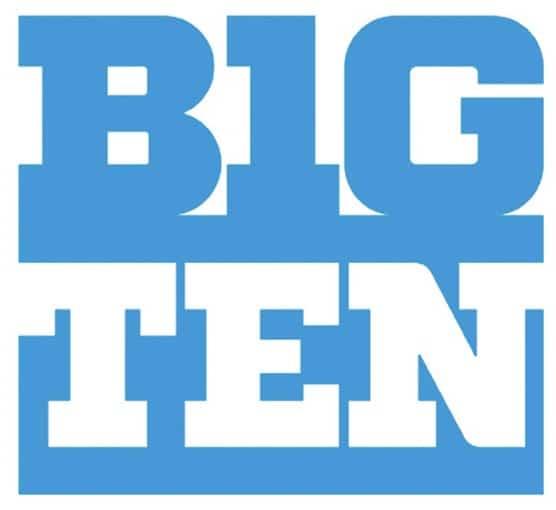Trump’s College Sports Commission: A Setback in Reforming Athletics
In a surprising turn of events within the realm of collegiate athletics, former President Donald Trump’s initiative to create a sports commission aimed at reforming college sports has come to an abrupt standstill. This development has sparked reactions from leaders and supporters across prominent conferences like the Big Ten and SEC. The proposal sought to tackle critical issues in college athletics, such as athlete compensation and governance, but was unexpectedly derailed due to political controversies involving figures like Texas Senator Ted Cruz. This article explores the ramifications of this setback for college sports, the surrounding political dynamics, and responses from key stakeholders in this ever-evolving arena.
The Role of Big Ten and SEC in Trump’s Sports Commission
The Big Ten and SEC have emerged as powerful entities within college sports, frequently clashing over matters that could shape the future of athletic programs nationwide. Their influence became particularly apparent when Trump unveiled his plans for a commission intended to reform how collegiate athletics are governed. This commission was expected to address significant challenges such as athlete remuneration, player safety standards, and scholarship policies. However, representatives from both conferences expressed substantial concerns regarding federal oversight’s potential impact on campus dynamics, fearing it could lead to unprecedented competitive disparities.
The sudden cessation of Trump’s commission can be attributed to interventions by various political figures including Ted Cruz, who raised questions about the necessity for extensive federal involvement. As discussions progressed, several key points emerged from leadership within both conferences that contributed to their reluctance regarding the establishment of this commission:
- Tradition vs. Modernization: Balancing historical integrity with contemporary advancements in college sports.
- Regulatory Concerns: Fears about excessive federal control undermining individual universities’ autonomy.
- Financial Implications: Potential negative effects on sponsorships and revenue-sharing models crucial for conference operations.
This convergence of political resistance alongside institutional hesitance played a pivotal role in unraveling what many believed could be transformative policies for collegiate athletics.
Ted Cruz’s Influence on College Athletics: A Political Perspective
The intersection between politics and collegiate athletics has often been fraught with tension—a dynamic exemplified by Ted Cruz’s recent actions that have resonated throughout the world of college sports. His outspoken advocacy for reforms—especially concerning NIL (Name Image Likeness) deals—has elicited mixed responses among stakeholders. Critics contend that his proposals may disrupt traditional NCAA structures while exacerbating inequalities between affluent institutions and smaller colleges; however, supporters view him as an essential catalyst advocating for financial equity within college sports’ hierarchically divided landscape dominated by conferences like Big Ten and SEC.
- Cruz’s proposals emphasize:
- A heightened focus on student-athlete rights and welfare initiatives.
- A call for transparency regarding financial operations within major athletic programs.
- The possibility of federal oversight concerning NIL agreements.
Diverging sharply from Cruz’s populist approach is Donald Trump’s vision articulated through his proposed sports commission which sought centralized authority aimed at creating uniform regulations across collegiate athletics plagued by rapid changes. While Trump advocated a top-down strategy designed to stabilize an industry facing complex financial challenges, Cruz championed individual athlete empowerment—a stark contrast highlighting ideological rifts among Republicans regarding governance in sport administration. This divergence illustrates broader ideological divides influencing how stakeholders navigate shifting currents within collegiate competition; it remains uncertain which vision will ultimately prevail moving forward.
Future Directions: Proposals for Cohesive Governance in College Sports
The landscape governing college athletics is undergoing significant transformation following the halted ambitions surrounding Trump’s proposed commission—which had potential implications for unifying disparate factions under NCAA jurisdiction. To effectively progress beyond this impasse, all parties involved—from conference leaders such as those representing the Big Ten and SEC strong >to policymakers—must adopt collaborative frameworks moving forward.< / p >
- < strong > Open Communication :< / strong > Establish regular forums facilitating dialogue among conference officials , athletic directors , & policymakers ensuring diverse perspectives are acknowledged .< / li >
- < strong > Standardized Regulations :< / strong > Develop streamlined rules governing recruitment , scholarships , & athlete compensation fostering equitable competition across different leagues .< / li >
- < strong > Transparency Initiatives :< / strong > Implement measures promoting transparency around financial dealings & decision-making processes building trust amongst stakeholders & public .< / li >
ul >Additionally , partnerships with technology platforms can yield innovative solutions integrating NIL agreements while preserving student-athletes’ integrity . An effective governance model should encompass : p >
Element th > Priority th > Description Compliance td > td > tr > td > tr > td > tr > Conclusion: The Ongoing Intersection Between Politics And College Sports Governance
The ambitious initiative put forth by Donald Trump aiming at establishing oversight over major conferences like Big Ten & SEC ​ ;has encountered considerable obstacles primarily stemming from political opposition coupled with logistical complexities surrounding its implementation.  ;As Ted Cruz emerges prominently amidst these developments it becomes evident how intertwined realms encompassing sport administration intersect intricately with broader political maneuverings creating multifaceted landscapes rife with tension.  ;This unexpected halt signifies deeper underlying conflicts present throughout various aspects related specifically towards governance issues impacting athletes’ rights alongside influences exerted via politics upon sporting domains themselves.& As relevant updates unfold CBS Sports remains committed towards providing insightful analyses reflecting implications arising out these evolving narratives shaping future trajectories pertaining directly towards American Collegiate Athletics.
